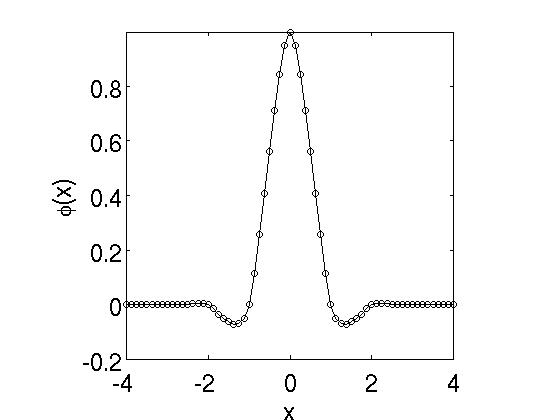
Department of Mathematics
My current research interest concerns Data Assimilation - with a specific focus for mathematical models of glaciers and ice-sheet dynamics. The objective of this research is to develop a data assimilation method for glacier dynamics. A brief description of my ongoing research and past research are summarised below.
Development of data Assimilation methods for mathematical models of glacier and Ice-sheet dynamics
Data assimilation is the name given to inverse problems within the context of predictability, whereby observations are assimilated into a dynamical model. Data assimilation methods have been transformative in ocean and atmospheric sciences; however, their use within glaciology has been limited. Predictions of future sea-level, determined by climate model projections, contain uncertainities steming from ice-sheet modelling inadequacies. My present research is to develop data assimilation methods for mathematical models of glacier dynamics.
Development of Numerical Methods
We have developed a novel computational methodology to elucidate two dimensional fluid flows. This numerical method is a weighted residual collocation method based on the multiscale wavelet decomposition. Numerical scheme for the study of non-hydrostatic atmospheric model is always a challenging issue to minimize the artificial dissipation. The governing equations of atmospheric flows are filtered with a Deslauriers-Dubuc (DD) wavelet system. The DD wavelet results in a non-dissipative advection scheme. Most nonhydrostatic Numerical Weather Prediction (NWP) models use forward-in-time integration schemes. For time integration of the governing equations, a fully implicit numerical scheme is used in this model. Forward-in-time integration schemes are restricted by Courant-Friedrichs-Lewy (CFL) number. However, this model is not restricted with CFL number. We have developed this model for investigating nonhydrostatic mesoscale atmospheric phenomena e.g. penetrative turbulence in atmospheric boundary layer.

Atmospheric Dynamics
My atmospheric research concentrates on the penetration of turbulent structures of the dry atmosphere. Generally speaking, the atmosphere contains a stratified fluid, where the lowest region that is in contact with the surface (known as atmospheric boundary layer (ABL)) is mainly characterized by turbulence. The ABL turbulence is primarily induced by surface heating and wind shear, and is influenced by the diurnal cycle. In the daytime, turbulence is driven by convective destabilization, but in the night-time, wind shear is a primary mechanism to trigger turbulence. The free troposphere above the ABL is usually stably stratified. The ABL turbulence may penetrate into the free troposphere through entertainment of air from the overlying stably stratified region into the fully turbulent boundary layer. This process transports momentum and energy from the mixed region to the free troposphere, which affects boundary layer clouds (crucial for the global climate change) and may trigger clear air turbulence in the free troposphere (crucial for aviation safety).
We have investigated the penetrative turbulence in the ABL in two ways. Firstly, penetration of an isolated buoyant element, which penetrates upwards into the surrounding stable atmosphere, is investigated. Secondly, a turbulent convective air covers a large horizontal area due to the differential heating is investigated. This phenomenon is observed during the daytime when the sun heats the earth’s surface. This surface heating leads to a convective motion which also leads to significant turbulence that mixes the air within the above stable layer. Moreover, such penetrative convection for both forms in the stable atmosphere generate gravity waves.

Leakage in Pipelines
Monitoring the surrounding pipeline temperature through fibre optic sensors is an efficient technology for detecting leakage of fluid: oil and gas, from pipelines. We have developed a computational model of temperature monitoring in such a leak detection system. A longitudinal cross section of an idealized pipe-in- pipe flow-line has been simulated, where a localized thermal source is placed on the lower boundary of the computational domain. The heat transfer rates and temperature profiles of the localized heat source have been investigated because a detailed understanding of the excess temperature surrounding a pipeline is essential to design efficient leak detection systems based on the active thermometry method. From these excess temperature profiles, a sensor cable collects the signal and send to the main monitor. As a result, it is very easy to find the leak and fix it. We need to see the larger intensity of localized heat sources which may create irregular flow behaviours or turbulent flow at the localized heat source and, leak detection system in the monitoring pipe which are called for future investigation.

Composite Numerical Integration
Double integrals over an arbitrary polygon have been evaluated exploiting finite element method. The physical region (e.g. quadrilateral, polygon etc.) with m-sides is decomposed into (m − 2) triangles. Then each triangle is transformed into a standard triangular finite element using the basis functions in local space. Then the standard triangle is decomposed into 4 × n2 right isosceles triangles with side lengths 1/n, and thus composite numerical integration is employed. In addition, the affine transformation over each decomposed triangle and the use of linearity property of integrals are applied. Finally, each isosceles triangle is transformed into a 2-sqare finite element to compute new s2 sampling points and corresponding weight coefficients, using s points conventional Gauss-Legendre quadratures, which are applied again to evaluate the double integral.
